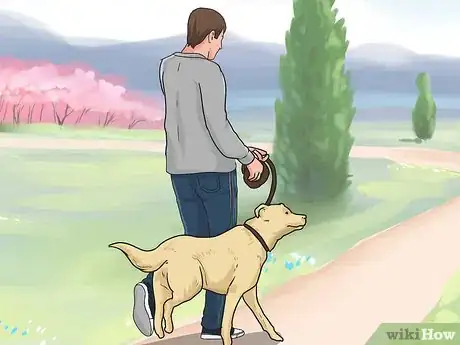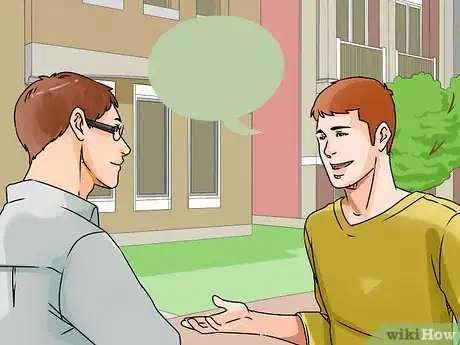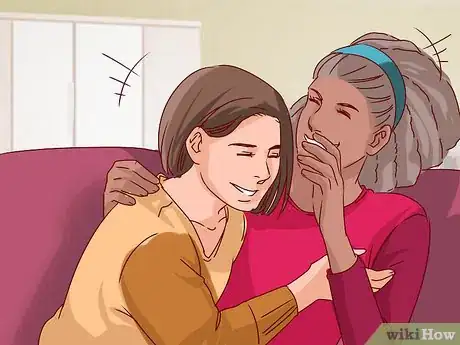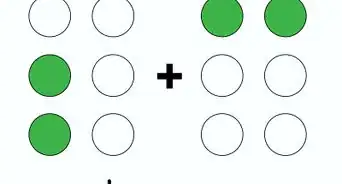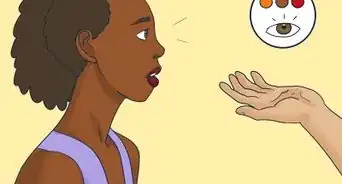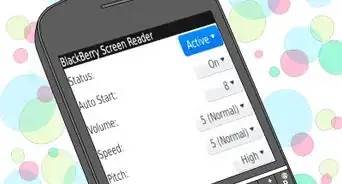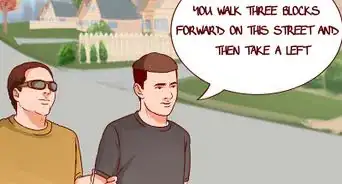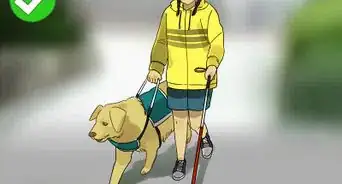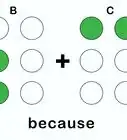This article was co-authored by Tasha Rube, LMSW. Tasha Rube is a Licensed Social Worker based in Kansas City, Kansas. Tasha is affiliated with the Dwight D. Eisenhower VA Medical Center in Leavenworth, Kansas. She received her Masters of Social Work (MSW) from the University of Missouri in 2014.
This article has been viewed 29,356 times.
Blind people want meaningful friendships just like everyone else. When getting to know a blind person, treat them like you would another friend. Adjust your manners so that they know when you’re around or leaving. Don’t forget about them when you’re in a group and include them in the discussions. Finally, show that you can be a good friend by being dependable and having fun together.
Steps
Getting to Know Them
-
1Remember that blind people are only different in vision. When you want to befriend someone who is blind, don’t treat them any different than you would treat anyone else. Don’t make any assumptions about their abilities or disabilities. Speak to people that are blind in your normal voice and have normal conversations.
- A blind person likely does not have any hearing problems, so don’t yell or speak louder than you normally would.
- Don’t assume that blind people are not intelligent. Speak to them as you would speak to anyone else.
-
2Identify yourself. When you interact with a blind person, make sure you introduce yourself. A blind person may not recognize you by your voice until you meet in person several times. Instead of letting them guess, always introduce yourself when you see them. Also, when you leave a conversation, let the person know. Say goodbye or that you’re going elsewhere.
- For example, when you join a conversation, say, “Hi Jordan, it’s Leslie.” When you leave, say, “Ok, Jordan, I, Leslie, am leaving now.”
Advertisement -
3Start a meaningful conversation. Your conversation doesn’t have to start with anything pertaining to their blindness. Start a conversation the way you would with another stranger. If you notice them listening to music you enjoy, say, “I like that band, too!” If you notice a blind person traveling, mention that you enjoy travel as well. Show an interest in the person and ask questions that help get to know them.[1]
- For example, you can say, “How long have you been working here?” or, “What brought you to the party tonight?”
-
4Find common interests. If you meet someone out in public, it’s easy to find things in common. For example, if you meet at a concert, ask them about what other music they enjoy. If you meet at a restaurant, ask about their favorite foods or if they have recommendations. If you meet at a park, you both may enjoy being in nature. Finding things in common can help you connect and build a friendship.
- While you might feel like you cannot relate with a blind person at first, you can learn quickly all the things you have in common. For example, perhaps both of you enjoy animals.
-
5Be respectful. Don’t become friends with someone just because they are blind. Blind people and people with disabilities in general don’t like to feel like you’re only friends because they need help. They want genuine and loving friendships, too. While many blind people don’t mind answering questions, it’s unlikely they want a friendship built on their blindness or you helping them because they’re blind.[2]
- If your friendship consists of helping them (whether they want it or not) but does not extend beyond that, make an effort to be a good friend in other ways.
Being Socially Considerate
-
1Include them in normal conversations. Don’t talk around the person or through another person. Don’t feel bad if you talk about television or other sighted activities. It’s likely the person is interested and wants to be included in the conversation.
- Talk about normal things. If the person doesn’t seem interested, change the subject.
-
2Avoid going to noisy places. If you want to hang out with your blind friend, don’t go to very crowded or noisy places. It can be difficult for your blind friend to discriminate what you’re saying or may become overwhelmed by the noise. When you choose a spot to hang out, find somewhere where you can enjoy yourselves and not be distracted by noise.
- Go to a small coffee shop or go on a walk.
-
3Give environmental cues. If you have established a relationship with a blind person, offer your help when you’re somewhere new. For example, announce stairs or escalators or say whether a door is opened by pushing or pulling. If you’re about to sit, ask if you can put their hand on the chair before sitting down.
- Offer to read a restaurant menu to them.
-
4Give help only when it’s asked for. Don’t assume that a blind person wants help. If you rush to help them without asking if they want assistance, they might feel embarrassed or offended. Many blind people want to be independent and do things on their own.
- If you see someone struggling with something, don’t assume that they want help. Ask. Say, “Would you like help with that?”
-
5Don’t pet or talk to a guide dog. Don’t go up to someone just to pet their dog. If the blind person has a service dog, don’t spend more time with the dog than the person. It can be distracting if you pet or talk to the dog. Keep your attention on the person you’re talking to.
- Especially if the dog is on duty, don't interfere or distract it.
Acting Like a Good Friend
-
1Be dependable. If you want to be a good friend, let them know they can count on you. Don’t say that you’ll do something then not follow through with it. Be dependable and let them know that you are loyal. If your friend needs something, offer to help.[3]
- Don’t bail if you say you’re going to be somewhere or do something. Show up, even if you’re not in the mood at the moment.
-
2Talk to them with tact. When talking to your friend, remember to speak to them in a polite and tactful manner--the same as you would any other person. Do not treat them differently just because they are blind or visually impaired.
- It is ok to refer to vision or use language such as "look" or "watch." You also shouldn't be afraid to say "blind" or "visually impaired."
- Try to be descriptive in your language when speaking to your friend. They may appreciate having extra detail about colors, patterns, textures, scents, and shapes.
- Do let your friend know when the conversation is over and when you need to leave. If you leave without telling them, they may continue speaking without realizing that you have left.
-
3Have fun together. Friendship is based on shared experiences and having fun together. Do activities that you both enjoy and that make you feel good. Find what things you have in common and do them together. Invite your friend to do things with you and with other people.[4]
- For example, go to your favorite restaurants together or go on a walk together.
-
4Be there in times of need. If your friend is going through a difficult time, be there for them. Know how to give and take in your friendship. Your friend should be there for you in times of need and you should be there for them. Whether it’s a death, a breakup, a bad grade, or just a bad day, show that you support them.[5]
- Do nice things for them and let them know that you care. For example, make them a meal or help them clean.
References
- ↑ http://www.succeedsocially.com/startconversations
- ↑ https://wheresyourdog.com/2014/10/03/exhibit-a-on-getting-past-the-novelty-stage/
- ↑ http://au.reachout.com/what-makes-a-good-friend
- ↑ http://www.cyh.com/HealthTopics/HealthTopicDetailsKids.aspx?p=335&id=1636&np=286
- ↑ http://au.reachout.com/what-makes-a-good-friend
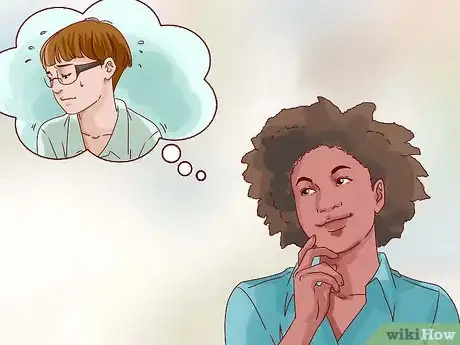
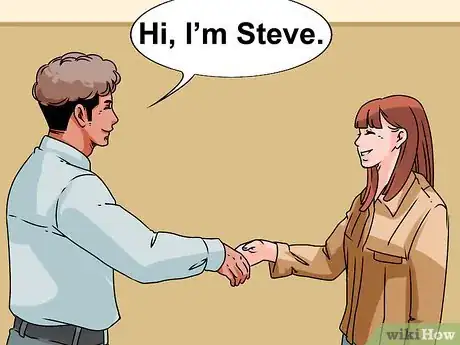

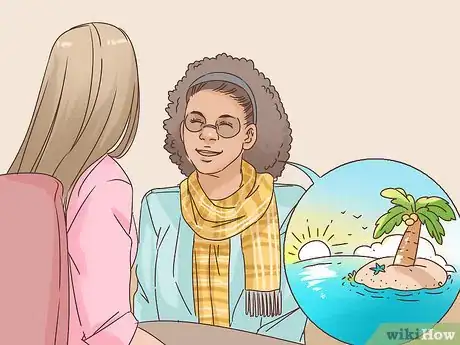

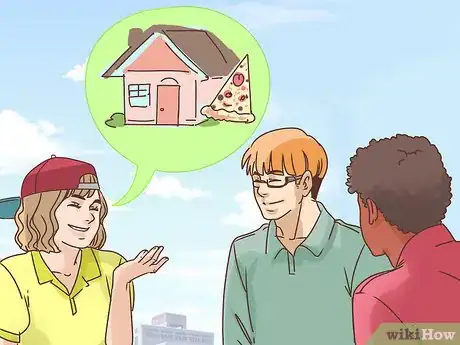

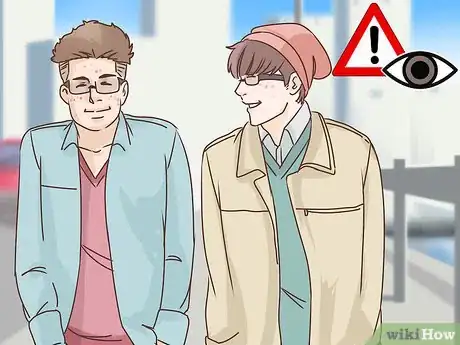
-Step-30.webp)
